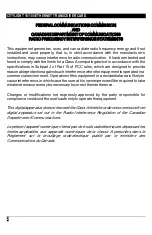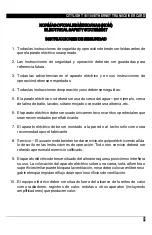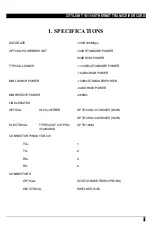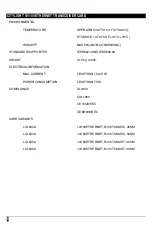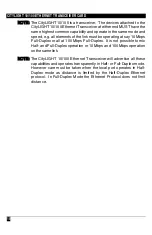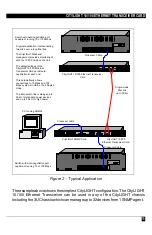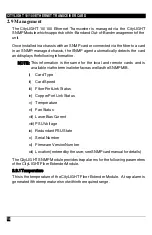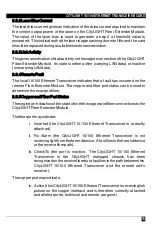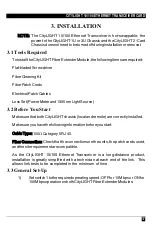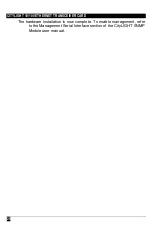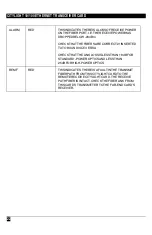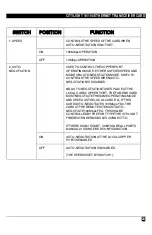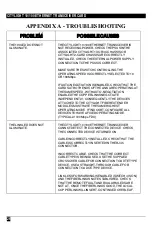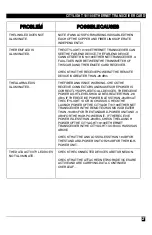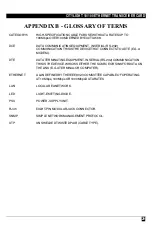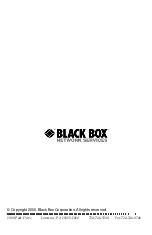
CITYLIGHT 10/100 ETHERNET TRANSCEIVER CARD
15
2.9.2 Laser Bias Current
The laser bias current gives an indication of the drive current required to maintain
the correct output power of the laser on the CityLIGHT Fiber Extender Module.
The value of the laser bias is used to generate a trap if a threshold value is
exceeded. This indicates that the laser is approaching its end of life and the card
should be replaced during a suitable maintenance window.
2.9.3 Link Activity
This gives an indication of data activity on the copper connection of the CityLIGHT
Fiber Extender Module. Its state is either active (carrying LAN data) or inactive
(not carrying LAN data).
2.9.4 Remote Fault
The local 10/100 Ethernet Transceiver indicates that a fault has occurred on the
remote Fiber Extender Module. The copper and fiber port status can be used to
determine the exact problem.
2.9.5 Copper and Fiber Port Status
These give an indication of the state of both the copper and fiber connections to the
CityLIGHT Fiber Extender Module.
The fiber port may indicate:
i.
Inserted (the CityLIGHT 10/100 Ethernet Transceiver is correctly
attached).
ii.
Rx Alarm (the CityLIGHT 10/100 Ethernet Transceiver is not
receiving light from the far end device. A fault lies in the far end device
or the receive fiber path).
iii.
CheckTx (the port is inactive. The CityLIGHT 10/100 Ethernet
Transceiver in the CityLIGHT managed chassis has been
recognized on the receive fiber but a fault lies in the path between this
CityLIGHT 10/100 Ethernet Transceiver and the remote unit’s
receiver).
The copper port may indicate:
iv.
Active (this CityLIGHT 10/100 Ethernet Transceiver is receiving link
pulses on the copper interface and is therefore correctly attached
and all other ports, both local and remote, are good).


